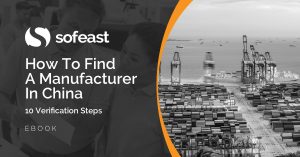We covered plastic materials in previous videos. Now we are covering their close cousin, the silicone rubber (often simply called “silicone”).
It is easy to make on very common equipment (often the same used to mold thermoplastics), and does not require very expensive tooling. As a result, it is increasingly common in newly-designed products.
Like plastic, silicone is used in a variety of products, from cookware to TV remote controls, from baby products to apparel, and from medical implants to cars.
Over on Sofeast, our senior engineer Paul did a ‘deep dive’ into this material and the ways it is most commonly shaped to help importers truly understand this useful material.
1. What is silicone and its uses?
This video covers:
- Common properties of products made of silicon rubber
- Common applications
- Special grades of silicon, for specific applications
- Medical grade applications
- The curing process (to convert the material into a solid)
Watch the video about silicone and its uses here.
2. The silicone rubber injection mold process
You will learn about:
- The similarities with thermoplastics molding
- Differences (liquid vs. solid that has to be heated up; lower pressure)
- In what ways it is simpler than plastic injection molding
- The process, step by step
- Typical tooling cost
Watch the video about silicone injection molding here.
3. The compression molding process for silicone
This is another common process:
- It makes sense for prototypes and small runs, as it is slower than injection molding but more simple
- The process, step by step — from silicone slugs to a molded part
- Limitations of this process: no tight tolerances, impossible for complicated parts, etc.
Watch the video about silicone compression molding here.
4. The silicone extrusion process
This is another very common way of shaping this material. We cover:
- Typical shapes of extruded products
- Preparation and blending
- The process, step by step
- Typical properties of extruded silicon
Watch the video about the silicone extrusion process here.
We hope it’s been helpful. By the way, we are gathering all these videos about production materials and processes in a library on our commercial website, Sofeast.com.
What other processes or materials do you often work with?
Are you trying to find a manufacturer in China who is well-suited to your needs and can also deliver on their promises?
Sofeast has developed 10 verification steps to help importers find the right manufacturing partner in China. They’re shared in this FREE eBook: “How To Find A Manufacturer In China: 10 Verification Steps.”
It covers:
- Background checks
- Manufacturing capabilities
- Quality system auditing
- Engineering resources
- Pricing, negotiation, & contracts
- …and much, much more
Just hit the button below to get your copy and put yourself in a great position to get better results from Chinese manufacturers who supply your products:

